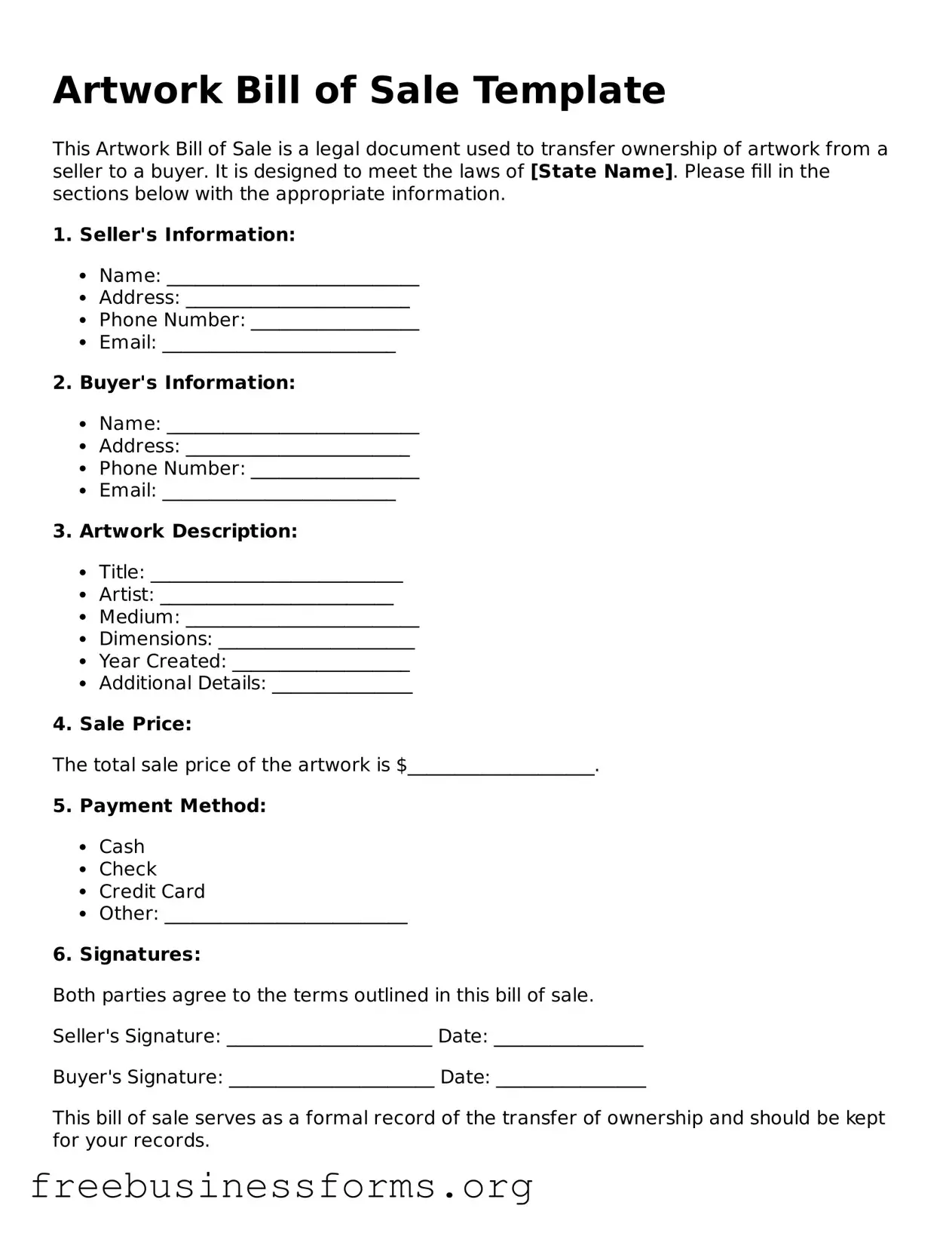Artwork Bill of Sale Template
This Artwork Bill of Sale is a legal document used to transfer ownership of artwork from a seller to a buyer. It is designed to meet the laws of [State Name]. Please fill in the sections below with the appropriate information.
1. Seller's Information:
- Name: ___________________________
- Address: ________________________
- Phone Number: __________________
- Email: _________________________
2. Buyer's Information:
- Name: ___________________________
- Address: ________________________
- Phone Number: __________________
- Email: _________________________
3. Artwork Description:
- Title: ___________________________
- Artist: _________________________
- Medium: _________________________
- Dimensions: _____________________
- Year Created: ___________________
- Additional Details: _______________
4. Sale Price:
The total sale price of the artwork is $____________________.
5. Payment Method:
- Cash
- Check
- Credit Card
- Other: __________________________
6. Signatures:
Both parties agree to the terms outlined in this bill of sale.
Seller's Signature: ______________________ Date: ________________
Buyer's Signature: ______________________ Date: ________________
This bill of sale serves as a formal record of the transfer of ownership and should be kept for your records.
